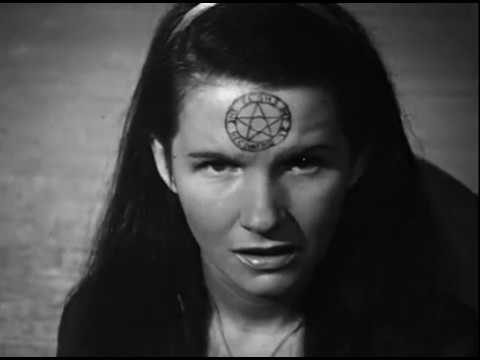Maya Deren, the director of Witch’s Cradle, is certainly a candidate for Gillian’s Attention Must Be Paid. Deren was an avant-garde film director, a socialist, and a bohemian who was in the same New York circles as Anais Nin and Marcel Duchamp (who appears in this film) among others. She even made well-regarded films on Haiti and voudou before dying at 44, likely from a mix of factors including amphetamine abuse. Deren was fierce, opinionated, teased for her “European” fashion sensibility, and her body of work as an art filmmaker is considerable.
Like many surreal artists of the time she was a critic of Hollywood and its traditional, safe approach to film, but her most damning criticism of conventional movies really lies in the movies she made herself. Her short films were intended as experiences, dreamy and haunting, meant to push cinema as an art film unto itself. Witch’s Cradle is technically unfinished but that term doesn’t really fit the final result. The film doesn’t have to be completed because its something you feel, not comprehend. (But because I’m a critic, I’m going to try.)
Twelve minutes long and in black and white, the film ties together various repeated images, shot from different angles over and over as if creating a pattern or a loop, much like the string that runs and binds through many of the shots. A woman appears to be performing an occult ritual, perhaps to see a doppelganger, while an elderly man played by Duchamp plays with the string. The string is likely a reference to actual witch’s cradles, a torture device bound with string that was later used by witches (supposedly) for sensory deprivation and hallucination. The movie feels like a hallucination – scenes glitch or start over. The young woman is seen with a pentagram on her forehead. A human heart hangs like a fruit on a tree. At one point the string forms a noose around Duchamp – Deren reclaims the images of witches hanging for her film, for feminism and for witches.
As the film ends, the string winds more and more around the architecture. The young girl appears to see doubles and mirror images of herself, a recognition of sorts. A mix of dread and curiosity is palpable, and as the string figures appear over the rooms, the camera traveling to keep up with them, it ends in ellipsis.
While Witch’s Cradle isn’t horror, the silent images are deeply Uncanny; it’s been nearly eighty years and modern film and TV is still trying to catch up to the mood of Deren’s work. The “Pyramid” scene in The Neon Demon owes a debt to Witch’s Cradle, with one shot of Elle Fanning meeting her own doppelganger being almost a direct lift. (Refn’s most recent films, even when they fail to earn their pretentiousness, capture Deren’s transfixed, slow mysticism impeccably.) There’s a direct connection too in the Hannibal TV series as it turned the subconscious of its characters into the Sublime, the nightmare turned beautiful. Witch’s Cradle is still a strange and eerie trip – to a point where the occult was part of experimental art, and to a vibrant and strange place not many directors would go again.

